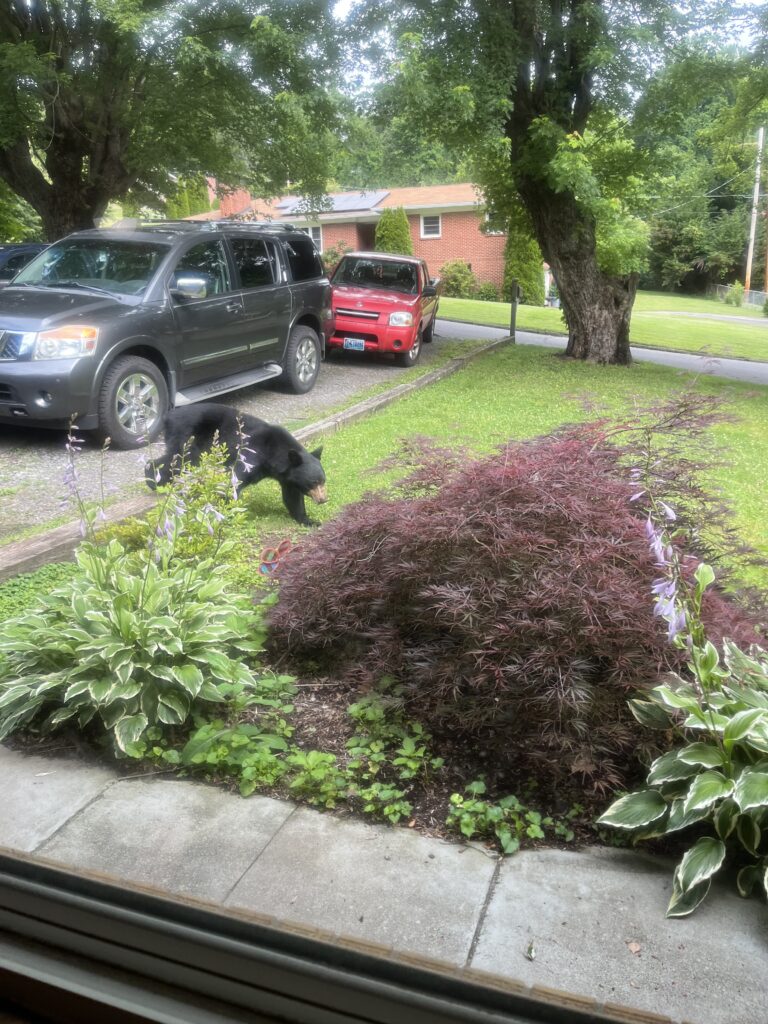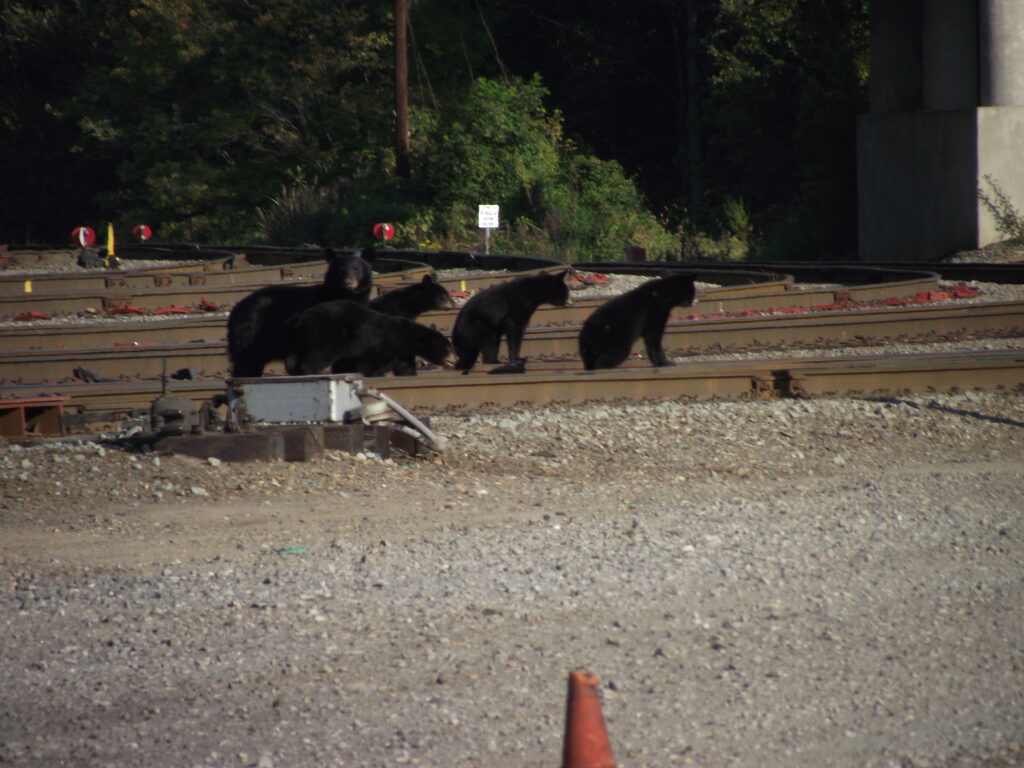Kim Parker was spending a normal weekend afternoon with family in the living room when she spied something out the window that left her speechless.

“I looked out and at first I couldn’t get the words out. I’m just pointing at the yard. The bear just came down from my neighbor’s yard, and then just came right in front of my vehicle,” said Parker, a longtime Waynesville resident.
Parker is among a growing number of Waynesville residents who have seen bears in town or captured footage of bears on security cameras. The sightings point to an urban bear population that is steadily growing, posing an increasing threat to Waynesville and neighboring towns.
Waynesville Town Council members agreed that bear sightings seemed to be on the rise, even in close proximity to downtown.
“I’ve lived here pretty much my whole life and never saw a bear. Then one afternoon in June one walks up my driveway on the way to finish off the birdfeeder of my neighbor,” said Council Member Jon Feichter. “It seems to me that the activity and encounters that we have with bears seem to be on the rise.”
Waynesville Mayor Gary Caldwell was forced to call the N.C. Wildlife Commission after bears began to make frequent and routine passes by his home in Auburn Park.
The town council was warned to get ahead of the bears before conflicts arise to reduce the threat of bear and human interactions.
“Don’t wait until you are having lots of issues. I would much rather be proactive with this to save you and your residents the headache later on,” Ashley Hobbs with the NC Wildlife Resources Commission told the town council.

Hobbs told the town council not to wait until bears become a problem like they had in Asheville, where she is constantly fielding calls on human-bear conflicts.
As a solution, Hobbs invited the town to join the BearWise program, which encourages the best practices to keep bears from taking up residence in town. According to Hobbs the urban bear population is on the rise and it’s not difficult to see why.
“It’s simple math. You’ve got a growing human population; you’ve got a growing bear population. Human-bear interactions happen more frequently as the years go on,” Hobbs said.
The bear population in the region as a whole is growing by anywhere from 2 to 5% each year according to Wildlife Commission biologists. That growth can be expedited in urban areas where bears have access to food from sources like bird feeders and trash cans.
“If you add in other components like tourism, it just kind of makes a perfect recipe for more interactions across the board,” said Hobbs.
The number one way to keep bears at bay is removing food sources. Those include bird feeders, unsecured trash and pet food bowls.
“They might come for the trash and stay for the bird feeder,” said Hobbs. “A seven-pound bird feeder holds 20,000 calories in seed. It is a no-brainer why they stick around.”
A bird feeder of that size is a day’s worth of food for a bear in the winter when they are looking to pack on the pounds.
The bear who passed through Parker’s yard was only a cub, but knew exactly what a bird feeder was. Footage of the bear caught on camera shows it walking across her yard and rising up on its back legs to investigate a bird feeder hanging from a limb.
“The bear had stopped at the tree and decided there was nothing in it and just went on,” said Parker, “but it was a little nerve wracking to have a bear in our front yard.”
Though the bear checked her bird feeder, it was usually empty. After finding no bird seed, Parker never saw the bear again.
Trash is also a problem because garbage is a high-calorie reward for a bear. When bears get access to garbage it rewards them for approaching humans and their homes. The more rewards a bear receives, the more likely they are to repeat the behavior and pass it on to their cubs.
The changes to stop this cycle are simple ones according to Hobbs.
“Putting together ordinances that say you can’t feed bears, you can’t intentionally put out food for bears, things like that really go a long way,” said Hobbs.

There are potential growing pains when changing people’s behavior, but it just takes commitment and some common sense, according to Hobbs.
Town council members seemed receptive to the idea of getting ahead of the problem before it becomes one.
“We have always lived with the bears, and we need to continue to have a respectful relationship with them,” said Council Member Anthony Sutton. “Once you’ve had a problem it’s a lot harder to remedy the situation. So, we’re trying to be very proactive.”
Sutton said he would support joining the BearWise program and thanked Hobbs for coming before the town council.
“With the BearWise program, it would help us not to get to the point of having an issue with bears coming into the urban area,” Sutton said.
While the number of urban bears is increasing, in Parker’s case, they could be just passing through. Parker is still taking measures on her own to prevent more bears from returning.
“We have pets and a little boy, you don’t really want bears hanging out with your kids outside,” Parker said. Since seeing the bear she and her family have become more vigilant making sure trash stays “locked up”.
There are still some people who would welcome a bear in their yard and not see it leave.
“Some people love bears to death, often to the detriment of the bear,” Hobbs said, “others would rather kill the bear and be done with it.”
The real key to becoming BearWise is learning to coexist with bears in a way that isn’t harmful to their natural instincts, she said.
This article was originally published in The Mountaineer



